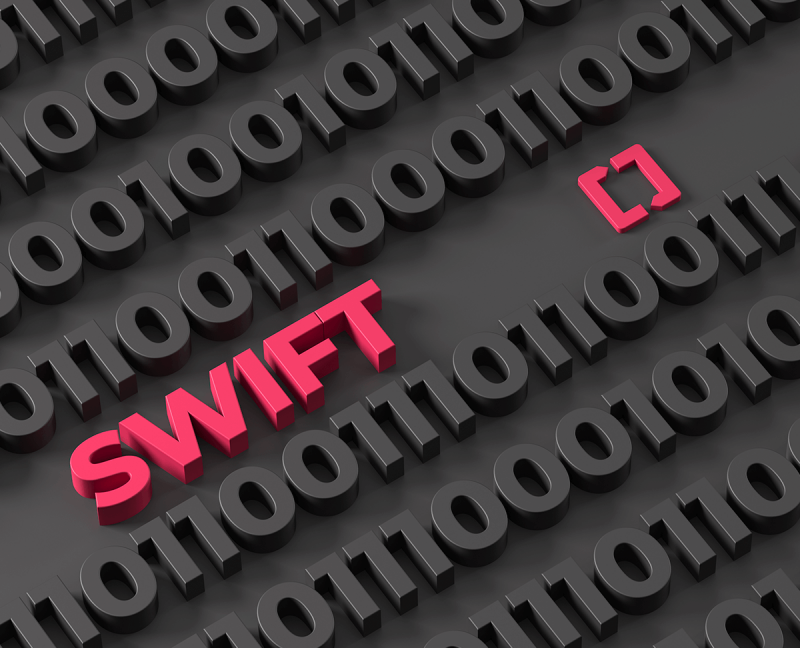
The financial world involves many technical terms and acronyms, and the language used for payments can be especially confusing to all but industry insiders. If you make a payment to another country, you are likely to hear the name SWIFT and will need to use a special code for bank-to-bank transfers.
Here’s an explanation of how the SWIFT system works and why international codes are a must for cross-border payments.
SWIFT stands for the Society for Worldwide Interbank Financial Telecommunication. Founded in 1973, SWIFT is a banking network that enables financial institutions to send and receive information about financial transactions in a standardised and secure format. SWIFT doesn’t actually send money; instead, it provides the framework for payments. In other words, it’s a messaging (or addressing) service where each payment delivery depends on a unique SWIFT code or BIC, which stands for Bank Identifier Code.
A SWIFT code and a BIC are the same thing. The terms are used interchangeably, which only increases the confusion for those unfamiliar with banking terms. Some banks and financial institutions say BIC rather than SWIFT code, and many people make the mistake of talking about ‘BIC codes’ (which is repetition, as the ‘C’ stands for code). Whether you say SWIFT code, BIC, or BIC code – they all describe the same thing, and every bank will be assigned a code to enable international payments.
A SWIFT code is a bank’s individual ID and is required so that international payments can be sent to the correct bank. You’ll need to use the code of your recipient’s bank if you are sending funds to another country, and anyone who sends money to you from abroad will need the code for your bank. Without a correct SWIFT code, funds might not reach the intended destination.
All SWIFT codes are composed of 8-11 alphanumeric characters, and each code uses a four-section format to identify the bank and its location. The four sections are as follows:
Four-letter bank code (A-Z) with no numerals Four-letter country code (A-Z) with no numerals Two-character location code composed of letters (A-Z )and numerals (0-9) Three-character branch code composed of letters (A-Z) and numerals (0-9) The three-character branch code is optional, which is why some codes only have eight characters.
There are several ways to locate a SWIFT code. You’ll usually see it displayed prominently on a bank’s website, and if it’s not instantly apparent, the search function will find it for you. You’ll also usually find it on bank statements, whether paper or electronic.
Alternatively, a number of websites can help you locate a SWIFT code. All you need to do is choose the country and provide the name of the bank. Here are two examples of SWIFT code finders:
Like a SWIFT code or a BIC, an IBAN is another acronym that’s characteristic of international payments. IBAN stands for International Bank Account Number. An IBAN is required to identify the location of a specific bank account whereas the SWIFT code is required to pinpoint the bank, so both are vital parts of the addressing system that ensures payments do not go astray – so long as all the details are entered correctly.
IBANs are also composed of numbers and letters, but they are much longer than SWIFT codes and can be up to 34 characters. Another distinguishing feature is that while SWIFT codes can be used worldwide, IBANs are normally used within the European banking network.
If you need to send or receive money between banks in different countries, perhaps because you’re running an international business, it’s important to understand the different options for cross-border transactions.
Wire transfers – the interbank transfers typified by SWIFT – are just one option. If you use a payment services provider such as Safenetpay, you can combine versatility with simplicity. Safenetpay makes it easy to pay and get paid wherever you are.
When you open a Safenetpay account, you’ll receive your own UK account number and sort code as well as an IBAN, and you can handle international transactions via the SWIFT network. Safenetpay enables you to accept all major credit cards, you can make payments in over 150 currencies, and you benefit from exchange rates that are often four times cheaper than high street banks. You are also set up for alternative payment methods such as digital wallets, including Apple Pay, Google Pay, PayPal, MasterPass, and Amazon Pay.